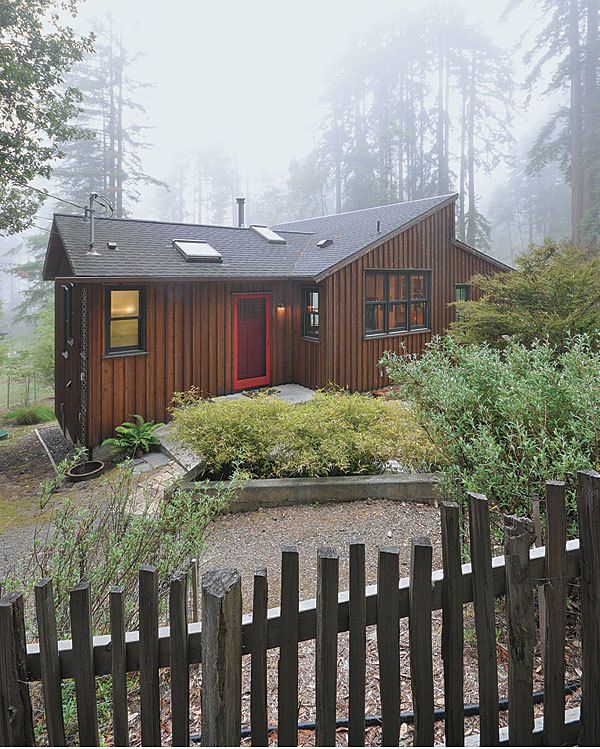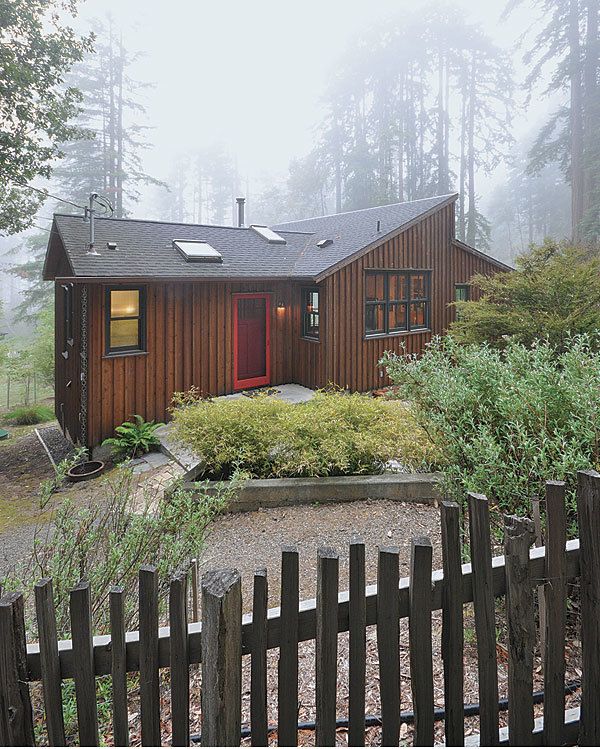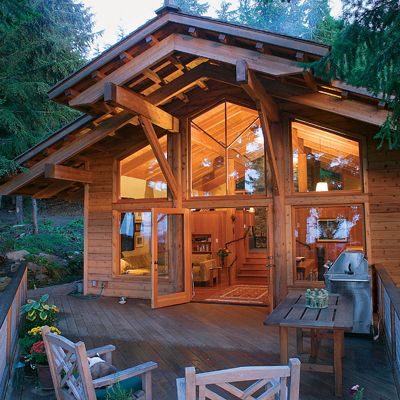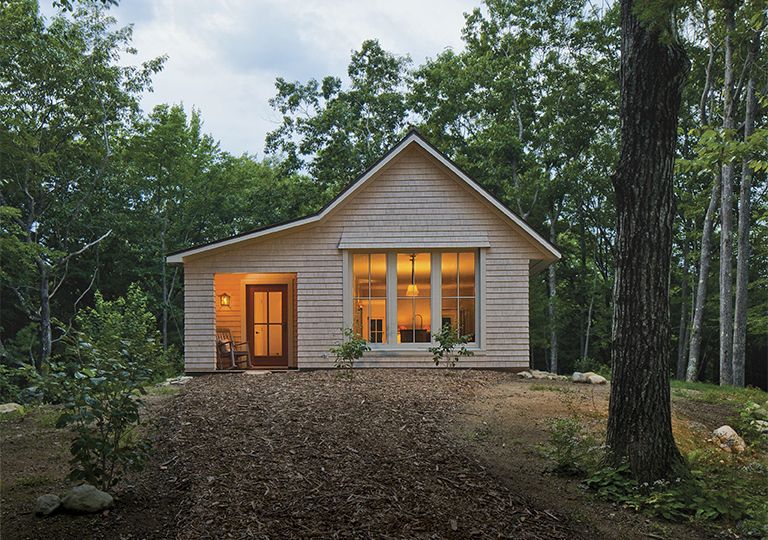
While there are plenty of really big houses being built (do 2.54 people really need five bedrooms and over 3,000 sq. ft.?), there’s no missing that small houses are a popular topic. Tiny dwellings are all the rage on TV, on the web, and a hot topic in print, too. What defines a small or tiny house is a bit up for debate, but frequently less than 1,000 sq. ft. is small and less than 400 sq. ft. is tiny. Regardless of how you define it, odds are you’re interested in, or better put, intrigued by, the small house movement, which is, of course, rather big. And even if you’d never live in such a house, you can gain a lot of inspiration from the ingenuity needed to make these small places viable places to call home. Check out the articles below to see what’s going on with the small houses.

This articles covers the clever ideas used to make a 800-sq.-ft. cottage comfortable and stylish. Small House Secrets

This slideshow is all inspiration and promoting the idea that bigger isn’t better. Inspiring Ideas for Small Houses

See what you think of these designs. There’s a pretty good range here from a not-so-tiny 1,600-sq.-ft. home to a 540-sq.ft. little gem. 5 Small Home Plans to Admire
Fine Homebuilding Recommended Products
Fine Homebuilding receives a commission for items purchased through links on this site, including Amazon Associates and other affiliate advertising programs.

Affordable IR Camera

Handy Heat Gun

8067 All-Weather Flashing Tape






























View Comments
Meaningless babble- whose result can only be a new feudalism!
As nice as 'small house' sounds, what, exactly, is it? Amazing how folks can feel so warm & fuzzy talking about something they cannot define. We're left with the same definition that some apply to porn: "We'll know it when we see it." I'm not sure Mr. Spock would consider that logical.
Ever notice how no one ever says 'here's what I want from a smaller house?' No! Instead, all we hear is 'OTHER folks need to live in smaller houses.' The next step in this agenda is to mandate smaller houses ... by code, zoning, planned developments, etc. In short, by removing choice and forcing folks into choices made by someone else. That's not freedom, nor a free market.
Here's a revolutionary thought: how about letting people decide what they want, and have their wants limited by free market forces? Let's put the consumer back in control.
After all, it's nobody's business what I want in MY house.
Liars can figure, too. Ever notice how many houses are made 'small' by locating necessary features elsewhere? Look at the plans .... those acres of decks, those various outbuildings, those lofts and attics .... are not counted as part of the square footage.
I find it ironic that most of the 'small' homes featured by FHB are actually larger than my full-size 50's tract home.
As for the question of "who needs ...?," well, that's not for you (or I) to decide. It's for the consumer. I can think of several retired couples whose huge homes are better considered as hotels and convention centers; the large homes were chosen specifically to host family gatherings. It's a much nicer solution than hotels and a fleet of rental cars.
Look to any retirement 'community,' and those nice little 'units' aren't nearly so little once you consider the miles of aisles and acres of common areas.
Let's trade this tired "small' horse for a better one. Instead, let's focus on 'good design.' Let's look for ways to bring the consumer closer to the design process. The trend has been to remove the consumer from the question - and we won't fix anything by adding another layer of separation.
The house I live in now is 900 square feet (30 x 30) on the main floor with a full basement.
The actual construction date is simply not available.
The last time the lot conveyed as an empty property was 1948.
Two coat plaster walls.
Some post ware AC cable with plastic insulation.
Scales of economy have managed to erase houses this size from new construction.
Fixed costs remain the same for any new house construction.
They are a large enough factor to drive new construction to larger structures to have a reasonable cost 'per square foot' (a sort of foolish way to purchase a house) to spread the costs out.
Some 30 years ago, when our kids were toddlers, my wife and I built our 2100 SF home. Today we’re in our early 70’s, our kids live between 80 and 7,000 miles away and we’re glad we have room for them and for our grandchildren to come for extended visits. Between visits when we start wishing we had less house to take care of, we just have to remind ourselves of the advantages of having the room.
All the same, if one of our kids found a job close by and wanted to take over our house, we’ve made tentative plans to build a small house on our property. That’s one of the reasons that I always read these small house articles and why I’ve bought about every one of Sarah Susanka’s books.
I completely agree that there is a need to focus on good design and I'd add to that the need for quality - in construction and in materials and components.
If the consumer were brought into the design process, I wonder how many would insist on 7 gables and 3 different design styles on the same house.